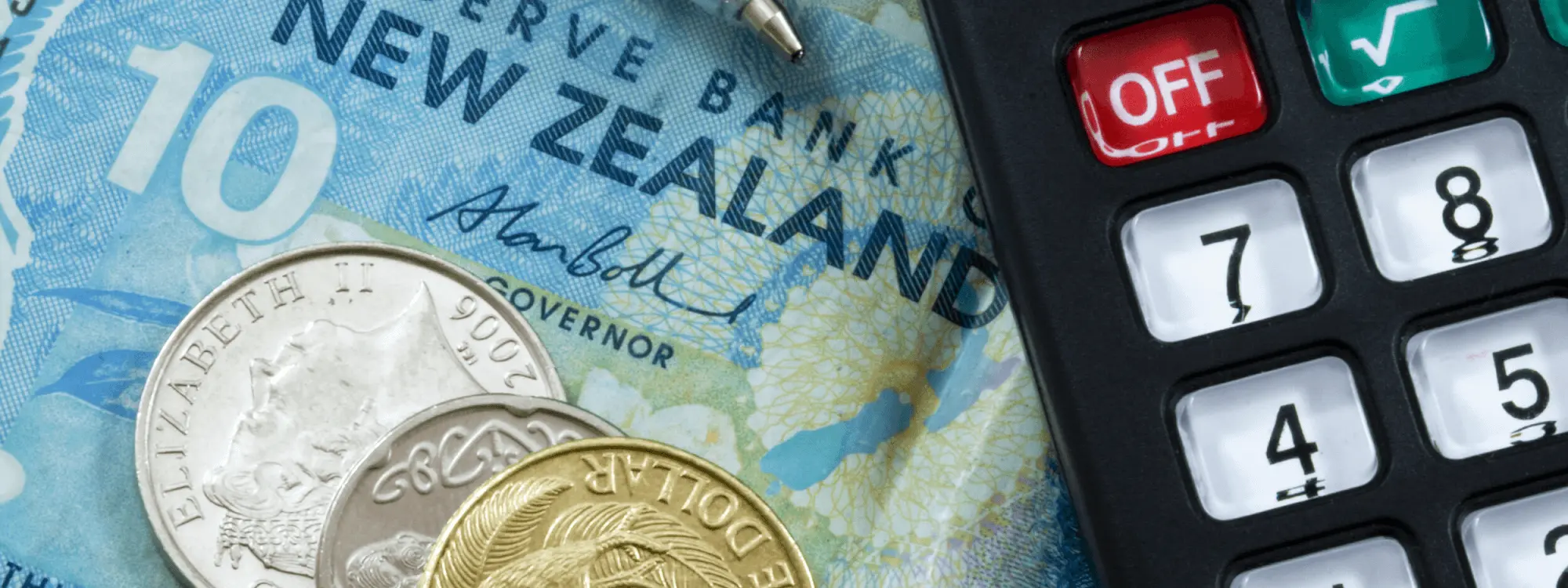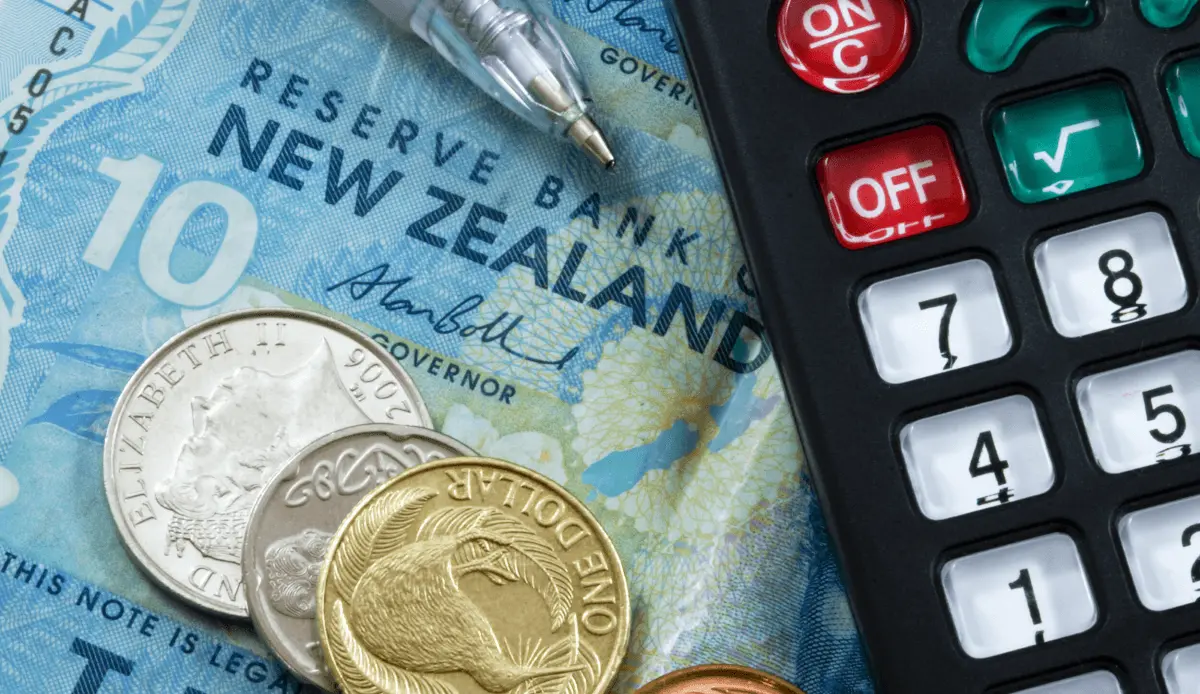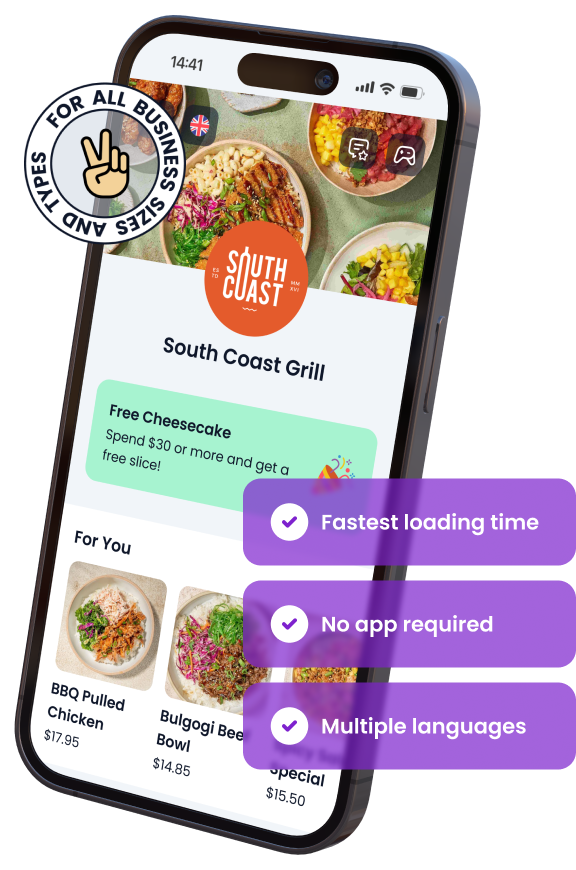

What are The Current GST Rates for Restaurants in New Zealand?
In New Zealand, Goods and Services Tax (GST) is a fundamental part of the economy, affecting all industries, including the restaurant sector. As a restaurant owner, understanding how GST impacts your business operations, pricing strategies, and tax obligations is crucial to staying compliant and maintaining profitability. Whether you are running a small café, a bustling city restaurant, or a catering business, keeping up with the latest GST rates and regulations can be challenging but necessary.
The current GST framework for restaurants covers everything from how you charge customers to how you file returns with the Inland Revenue Department (IRD). Mismanaging GST can lead to costly penalties and disrupt your cash flow, so it’s essential to be well-informed and proactive about compliance. This article will guide you through the ins and outs of New Zealand’s GST rates for restaurants, covering the essentials of registration, filing, and managing your tax obligations efficiently.
By the end of this guide, you will have a clearer understanding of how GST applies to your restaurant, enabling you to make informed decisions that positively impact your operations and bottom line.
Would you like to listen our deep-dive conversation about this article?
Understanding GST in New Zealand
GST (Goods and Services Tax) is a broad-based tax applied to most goods and services sold in New Zealand, including food and beverages in restaurants. For restaurant owners, understanding how GST works and the specific rules that apply to the food and beverage sector is crucial for both compliance and effective financial management. This section will break down the key elements of GST and how it relates to your restaurant business.
What is GST and How Does It Apply to Restaurants?
GST is currently set at 15% in New Zealand and is charged on most food and beverages served in restaurants, cafes, and bars. This tax is added to the final price that customers pay and is passed on to the government through regular GST returns.
Why GST is Important for Your Restaurant Business
Being GST-compliant is essential to avoid penalties and ensure smooth financial operations. GST can also impact your pricing strategy, cash flow, and how your customers perceive your pricing structure. Key points to consider include:
- Ensuring all taxable goods and services are correctly charged.
- Keeping track of GST-exempt or zero-rated supplies.
- Filing accurate GST returns to avoid penalties.
When Do Restaurants Need to Register for GST?
You must register for GST if:
- Your restaurant’s annual turnover exceeds NZD $60,000 in any 12-month period.
- You anticipate that your turnover will exceed this threshold in the near future.
Once registered, you will need to:
- Charge GST on all eligible sales.
- File GST returns either monthly or bi-monthly, depending on your selected reporting cycle.
| Turnover Threshold | Registration Requirement |
|---|---|
| Under NZD $60,000 | GST registration optional |
| Over NZD $60,000 | GST registration mandatory |
Understanding these basics helps you maintain compliance and ensures your restaurant operates efficiently within New Zealand’s tax framework.
GST Rates for Restaurants in New Zealand
The GST rate plays a significant role in how you manage your restaurant’s pricing, profitability, and compliance with tax laws. In New Zealand, the current GST rate is set at 15%, but there are specific nuances that apply to different items and services within the restaurant industry. Understanding these details ensures you apply the correct rates and stay compliant with tax regulations.
What is the Current GST Rate for Restaurants in 2024?
As of 2024, the GST rate for restaurants remains at 15%. This rate applies to:
- Dine-in services.
- Takeaway meals.
- Beverages, including both alcoholic and non-alcoholic.
The 15% GST is added to the total price that the customer pays, which includes food, beverages, and any other taxable services.
How GST is Calculated for Food and Beverage Services
Calculating GST is relatively straightforward. For every dollar your customer spends on taxable goods or services, 15% is allocated to GST. Here’s a basic calculation:
- GST-exclusive price: If your menu item is priced at $100 (GST-exclusive), you would add 15%, making the total $115.
- GST-inclusive price: If your menu item is listed as $115 (GST-inclusive), the GST portion is calculated as $115 ÷ 1.15, which gives $100 for the base price, and $15 as the GST.
| Item | GST Exclusive Price | GST Amount (15%) | GST Inclusive Price |
|---|---|---|---|
| Meal | $100 | $15 | $115 |
| Drink | $50 | $7.50 | $57.50 |
Differences Between Standard GST Rate and Zero-Rated Supplies
While the standard GST rate is 15%, some goods and services are zero-rated, meaning GST is charged at 0%. However, in restaurants, zero-rating usually applies to specific circumstances, such as:
- Exported food items: If you export food, it may qualify as zero-rated.
- Certain dietary supplements: These may also fall under zero-rated supplies depending on the specific product and its use.
This distinction is crucial for avoiding overcharging GST on items that should be zero-rated.
Common Exemptions from GST for Restaurant Owners
Not all goods and services are subject to GST. Some exemptions relevant to restaurants include:
- Employee meals: Meals provided to staff may be exempt from GST, depending on the arrangement.
- Certain fundraising events: If you host fundraising events, the meals or services provided may be exempt under specific charitable conditions.
Understanding these exemptions can help you optimize your pricing and ensure you’re not unnecessarily charging GST where it isn’t required.
This section outlines how the 15% GST rate applies to your restaurant, along with key details that can impact your daily operations. Knowing the rates and when to apply them will streamline your financial management and tax compliance.
How to Charge GST in Your Restaurant
Charging GST correctly in your restaurant is essential for compliance and maintaining transparency with your customers. Implementing proper systems to calculate, display, and manage GST ensures that your pricing remains competitive while meeting your legal obligations. In this section, we will explore effective strategies to charge GST, how to present it to customers, and ways to ensure accurate calculations.
Pricing Strategies to Incorporate GST
When setting your menu prices, you can either include GST in the listed price (GST-inclusive) or add it at the point of sale (GST-exclusive). Each approach has its pros and cons:
- GST-inclusive pricing: This is where GST is already built into the menu prices. It’s transparent to customers and avoids confusion, as they pay the listed price without additional fees.
- GST-exclusive pricing: GST is added at checkout. This can make menu items appear cheaper but might lead to customer dissatisfaction when the final price is higher than expected.
Pros and Cons of Each Strategy:
| Strategy | Advantages | Disadvantages |
|---|---|---|
| GST-Inclusive Pricing | Transparent, no surprises for customers | Menu prices appear higher compared to GST-exclusive |
| GST-Exclusive Pricing | Menu prices appear lower, can attract price-conscious customers | Customers may feel surprised or misled by the higher final bill |
How to Display GST on Your Menu and Receipts
- Menu presentation: If your prices are GST-inclusive, indicate it clearly on your menu with a note such as “All prices include GST.”
- GST-exclusive pricing: If you choose to display GST-exclusive prices, ensure that there’s a clear statement that “GST will be added at checkout.”
- Receipts: Always itemize the GST amount separately on your receipts. This not only makes it clear to customers but also helps you maintain accurate records for tax purposes.
Ensuring Accurate GST Calculations on Food and Beverages
Accurate GST calculations are critical to avoid compliance issues and ensure proper reporting. Here are some steps to ensure accuracy:
- Use a reliable point-of-sale (POS) system: A POS system that automatically calculates GST on each transaction ensures accuracy and reduces manual errors.
- Update pricing for changes in GST rates: Should the GST rate change in the future, your menu prices and POS systems need to be updated immediately.
- Regularly review receipts: Periodically review receipts and POS system reports to verify that GST is being correctly applied to all taxable items.
Checklist for Ensuring Accurate GST Charges:
- Menu prices and receipts clearly state GST information.
- The POS system is configured to automatically calculate GST.
- Regular audits are conducted to ensure no errors in GST calculations.
Implementing these best practices for charging GST will help you maintain transparency, reduce errors, and ensure customer satisfaction while complying with legal obligations.
Filing and Paying GST as a Restaurant Owner
Filing and paying GST correctly is a crucial part of running a restaurant in New Zealand. Staying on top of your GST obligations helps avoid penalties and ensures your restaurant operates smoothly. In this section, we’ll explore the process of filing GST returns, keeping accurate records, and avoiding common filing mistakes.
Step-by-Step Guide to Filing GST Returns in New Zealand
Filing GST returns can be straightforward if you follow a clear process. Here’s a step-by-step guide for restaurant owners:
- Determine your filing frequency:
- Monthly: Ideal for larger restaurants with higher turnovers.
- Two-monthly: The most common option for restaurants.
- Six-monthly: Available for businesses with smaller turnovers (under $500,000).
- Prepare your financial records: Gather all necessary documents, including sales, purchases, and expenses.
- Calculate GST: Calculate the GST on sales (output tax) and the GST you paid on purchases (input tax). The difference between these two figures determines how much GST you need to pay or if you’re due a refund.
- Submit your GST return:
- File your GST return through the Inland Revenue Department’s (IRD) myIR portal.
- Ensure you submit it by the due date (the 28th of the following month after your filing period).
- Pay any outstanding GST: Pay the GST you owe by the due date to avoid penalties.
What Records You Need to Keep for GST Filing
Accurate record-keeping is essential for filing GST returns correctly and for audit purposes. As a restaurant owner, you must maintain records of:
- Sales receipts: Itemized receipts that show GST collected.
- Invoices from suppliers: Documentation of GST paid on purchases.
- Bank statements: To track payments and income.
- Expenses: Keep receipts for all business expenses, such as utilities, equipment, and food supplies.
Key Records to Keep:
| Document Type | Purpose |
|---|---|
| Sales receipts | Track GST on customer transactions |
| Supplier invoices | Record GST paid on goods and services |
| Bank statements | Verify income and expense payments |
| Expense receipts | Document operational costs for deductions |
How to Avoid Common GST Filing Mistakes
Mistakes in GST filing can lead to penalties and increased scrutiny from the IRD. To avoid common pitfalls, consider the following tips:
- Check calculations carefully: Ensure that your GST on sales and purchases is calculated correctly, especially when using a manual system.
- File on time: Late filing can result in penalties and interest on unpaid GST.
- Claim only allowable expenses: Ensure that all expenses claimed for GST purposes are business-related and properly documented.
- Regularly reconcile accounts: Ensure that your accounting software or POS system is aligned with your financial records to prevent discrepancies.
Common Mistakes to Watch Out For:
- Forgetting to file GST returns by the due date.
- Overclaiming GST on non-business expenses.
- Misreporting sales or purchases, leading to incorrect GST amounts.
Penalties for Late GST Payments or Errors
Failing to file or pay GST on time can result in penalties and interest charges. It’s essential to understand the consequences and take steps to avoid these costly mistakes:
- Late filing penalties: A flat fee plus a percentage of the overdue GST may apply.
- Interest charges: The IRD charges interest on any overdue tax, which can add up quickly if left unpaid.
- Audit risk: Consistent filing mistakes or non-compliance can trigger an audit by the IRD, leading to further penalties or investigations.
Staying organized and diligent with your GST filing and payments will help your restaurant remain compliant and avoid unnecessary costs. Following these guidelines will ensure you stay on track with your tax obligations.
Impact of GST on Restaurant Operations
GST has a direct impact on various aspects of your restaurant’s day-to-day operations, from cash flow management to pricing strategies. Understanding how GST influences your restaurant’s financials can help you make more informed decisions, optimize profits, and maintain smooth operations. This section will explore the effects of GST on cash flow, handling imported goods, and strategies for managing GST costs.
How GST Affects Your Cash Flow and Profit Margins
GST can have a significant effect on your restaurant’s cash flow and profit margins. Since GST is collected on sales and paid on purchases, the timing of these transactions is crucial for managing your cash flow. Here’s how it works:
- GST collected: This is the GST you charge your customers. It forms part of your sales revenue but is not actually your income—it must be passed on to the government.
- GST paid: This is the GST you pay on goods and services purchased for your restaurant, which can be deducted from the GST you owe the government.
Managing cash flow effectively means:
- Tracking both incoming and outgoing GST: Be aware of when GST is collected versus when it’s due to be paid.
- Timing expenses: Aligning purchases with your GST filing periods can help spread the burden of payments and manage your cash flow better.
- Impact on profit margins: Restaurants with lower profit margins need to factor in the 15% GST when setting prices to ensure profitability after GST deductions.
| Cash Flow Impact | Considerations |
|---|---|
| GST collected on sales | Not your income—must be passed on to the government |
| GST paid on purchases | Can be claimed back, reducing your liability |
| Aligning purchases with filing | Helps smooth cash flow and reduce financial strain |
How to Manage GST on Imported Goods for Your Restaurant
If your restaurant imports goods, such as specialty ingredients, equipment, or beverages, you’ll need to manage GST on those items as well. Here’s how it works:
- GST on imported goods: You must pay GST on the value of imported goods when they arrive in New Zealand.
- Customs declarations: Ensure that you correctly declare the value of imported goods to avoid under- or overpaying GST.
- Claiming GST back: You can claim the GST paid on imported goods as input tax when you file your GST return, reducing your overall tax liability.
Key Steps to Manage GST on Imports:
- Accurately track and declare the value of imported items.
- Ensure GST on imported goods is paid at customs.
- Claim back GST on imports in your next GST return.
| Action | Outcome |
|---|---|
| Declare value at customs | Ensures correct GST payment |
| Pay GST at customs | Required to release goods |
| Claim GST on imports | Reduces your GST liability during the filing process |
Should You Absorb GST or Pass It on to Customers?
As a restaurant owner, you need to decide whether to absorb the GST into your pricing or pass it on to your customers. Each option has its advantages and disadvantages:
- Absorbing GST: When you absorb GST, your prices appear lower to customers, which may improve competitiveness but reduce your profit margins.
- Passing GST on to customers: Adding GST on top of the listed prices makes it clear that the customer is paying the tax, but it can make your prices appear higher, especially in competitive markets.
Factors to Consider:
- Market positioning: High-end restaurants may easily pass on GST, while budget-conscious establishments might opt to absorb it.
- Competitiveness: In a competitive market, keeping your prices GST-inclusive can make your restaurant more attractive to customers.
- Profit margins: Ensure your menu prices are set high enough to cover both your costs and the GST liability.
Effectively managing GST and its impact on operations requires careful planning, from cash flow to pricing strategies. By understanding these elements, you can make decisions that improve your restaurant’s profitability while staying compliant with tax regulations.
GST Refunds and Adjustments for Restaurant Businesses
GST refunds and adjustments are common for restaurant businesses, especially when handling large volumes of transactions, input costs, and occasional mistakes in filing returns. Understanding when you are entitled to a refund, how to correct errors, and what to expect during a GST audit can save your business time and money. In this section, we’ll dive into how to manage GST refunds and adjustments effectively.
Can Your Restaurant Claim a GST Refund?
Your restaurant may be entitled to a GST refund under certain circumstances. The most common situation is when the GST you have paid on your business expenses (input tax) exceeds the GST you have collected from sales (output tax). Here’s when you might be eligible for a refund:
- Significant business purchases: If you’ve made a large capital purchase (e.g., new kitchen equipment), the GST on that purchase may exceed the GST collected from sales during the same period.
- Low sales periods: During off-peak seasons, if your sales are down but you’ve still incurred regular business expenses, you may find yourself in a position to claim a refund.
- New restaurant setup: If you’ve recently opened your restaurant and have invested heavily in setting up but haven’t generated significant sales yet.
Steps to Claim a GST Refund:
- File your GST return as usual.
- If the input tax exceeds output tax, the IRD will automatically issue a refund.
- Ensure all claims are well-documented in case of any queries from the IRD.
How to Correct Mistakes on Your GST Return
Mistakes in your GST return can happen, whether through calculation errors, omissions, or misreporting sales and expenses. The good news is that the Inland Revenue Department (IRD) allows you to correct errors in your returns without facing penalties, provided the mistakes are honest and promptly addressed.
Steps to correct errors:
- Minor mistakes (under NZD $1,000): You can correct these in your next GST return. Simply adjust your figures accordingly, and make a note of the correction.
- Significant errors (over NZD $1,000): Notify the IRD as soon as possible through the myIR portal, explaining the mistake and the necessary adjustments. The IRD may require additional documentation to support the correction.
Common GST Return Mistakes:
- Misreporting the GST amount on sales or purchases.
- Claiming GST on non-business or personal expenses.
- Failing to account for zero-rated or exempt supplies correctly.
What Happens During a GST Audit for Restaurants?
A GST audit is a formal examination by the IRD to ensure your GST returns are accurate and that your business complies with GST regulations. While audits are not frequent, they can happen, especially if there are discrepancies in your returns or if you frequently claim large refunds.
Here’s what to expect during a GST audit:
- Notification: The IRD will inform you in advance about the audit and request relevant records, including sales invoices, purchase receipts, and GST returns.
- Audit scope: The IRD may review your returns for a specific period, or they could conduct a more comprehensive audit of your overall financials.
- Outcome: If discrepancies are found, the IRD will notify you of any adjustments required, and you may need to pay additional GST or penalties.
Tips to Prepare for a GST Audit:
- Maintain clear, organized records of all transactions, receipts, and GST filings.
- Regularly reconcile your GST accounts to ensure accuracy.
- Consult with your accountant or tax advisor if any discrepancies arise.
| Audit Stage | Action |
|---|---|
| Notification from IRD | Prepare all GST-related documents for review |
| Review of records | Submit sales receipts, purchase invoices, and returns |
| Outcome and adjustments | Pay any outstanding GST or penalties as required |
Handling GST refunds and adjustments effectively can ensure your restaurant remains compliant while minimizing financial risks. By staying organized and proactive, you can take advantage of refunds when available and rectify any mistakes quickly and efficiently.
How GST Affects Different Types of Restaurants
The Goods and Services Tax (GST) affects different types of restaurants in various ways depending on their specific operations and services offered. Whether you run a café, bar, catering business, or a restaurant franchise, the way you handle GST may vary slightly. Understanding these distinctions can help you manage your tax obligations more effectively. This section explores how GST applies to different types of food and beverage establishments.
GST Rates for Cafes, Bars, and Catering Services
The standard GST rate of 15% applies uniformly to all food and beverages sold in cafés, bars, and catering services. However, each type of establishment may have distinct operational practices that affect how GST is calculated and managed.
- Cafes: Cafes typically offer both dine-in and takeaway options. GST must be applied to both types of sales, but handling takeaway GST correctly is crucial since it might involve discounted deals or zero-rated items like exported coffee beans.
- Bars: Bars not only sell food and beverages but may also offer entertainment services. For bars, GST is applied to food, drinks (alcoholic and non-alcoholic), and any service charges. Special care should be taken when applying GST to cover charges or service fees added to the bill.
- Catering Services: For catering businesses, GST is charged not only on the food and beverages provided but also on the service aspect of event management, rentals (such as tables or serving equipment), and delivery fees. Managing GST on these additional services can become complex, but accurate pricing and documentation will help ensure compliance.
How GST Works for Delivery and Takeaway Services
Delivery and takeaway services have become a vital part of the restaurant industry, especially since the rise of food delivery apps and platforms. The application of GST for these services depends on the nature of the transaction:
- Takeaway orders: GST is applied at 15% on all takeaway orders. This includes meals prepared for immediate consumption and takeaway beverages.
- Delivery services: For restaurants offering delivery, GST is not only charged on the food but also on the delivery fee. If a third-party platform (such as UberEats or Deliveroo) handles delivery, they may include GST in their charges, which you’ll need to account for when filing your return.
What Is the GST Impact on Restaurant Franchises?
Restaurant franchises operate differently from independent restaurants due to the franchising model. Franchises must manage both the GST on the food and beverages they sell and the GST implications of their franchise fees and royalties.
- Franchise fees and royalties: When a franchisee pays fees or royalties to the franchisor, these payments are usually subject to GST. The franchisee can typically claim GST back on these payments as an input tax credit, provided they are GST-registered.
- Centralized purchasing: Many franchise systems operate a centralized purchasing model for food supplies and equipment. If these purchases are made on behalf of franchisees, GST must be accurately tracked and reported at each stage.
- Reporting and compliance: Franchisees must file GST returns like any other restaurant, but they also need to coordinate with the franchisor to ensure all fees, royalties, and transactions are accurately reported.
GST compliance affects different types of restaurants in unique ways, whether it’s managing takeaway orders, delivery fees, or franchise payments. By understanding how GST applies to your specific business model, you can streamline your tax processes and avoid costly mistakes.
Frequently Asked Questions about GST for Restaurants
Restaurant owners often have several questions about GST, particularly around specific scenarios like tips, online orders, and registration timelines. This section covers some of the most common questions that restaurant owners ask about GST in New Zealand, providing clarity and guidance for everyday operations.
Is GST Applicable to Tips and Service Charges?
In New Zealand, tips or gratuities are generally not subject to GST as long as they are voluntary payments made by customers. However, if the tip is added as part of the bill, such as a mandatory service charge for large groups, then GST must be applied to that service charge.
- Voluntary tips: No GST is applied.
- Mandatory service charges: Subject to GST at the standard 15% rate.
How Does GST Apply to Online Food Orders and Delivery Apps?
For restaurants offering online food delivery, GST applies to both the food and the delivery fees. This includes orders placed directly with the restaurant or through third-party platforms like UberEats, Menulog, or Deliveroo. Here’s how it breaks down:
- Direct restaurant orders: GST applies to both the food and any delivery or service fees.
- Third-party platforms: If using third-party delivery services, GST may already be included in the platform’s service fees, so it’s important to verify this in your accounting.
What Happens If You Don’t Register for GST on Time?
If your restaurant reaches the NZD $60,000 turnover threshold and you don’t register for GST on time, you may face penalties from the Inland Revenue Department (IRD). Here’s what you need to know:
- Penalties: The IRD can impose late registration penalties and interest on any GST you should have collected.
- Backdated GST: You may need to pay GST on past sales that exceeded the threshold, even if you weren’t registered at the time.
It’s best to monitor your sales closely to ensure you register as soon as you approach the $60,000 threshold to avoid unnecessary penalties.
Can You Claim GST on Restaurant Renovations?
Yes, if your restaurant is GST-registered, you can claim back GST on business-related expenses, including renovations and refurbishments. However, the renovations must be directly related to the operation of the restaurant.
- Eligible expenses: GST can be claimed on materials, contractor services, and equipment used in the renovation.
- Non-business areas: If any renovations include non-business parts of the premises, GST cannot be claimed on those portions.
How Can You Handle GST on Donations or Fundraisers?
In some cases, restaurants hold charity events or fundraisers where part of the proceeds are donated. How you manage GST in these scenarios depends on the nature of the event:
- Fundraising sales: If your restaurant is selling food or beverages as part of the event, GST must still be charged on those sales.
- Donations: Pure donations (with no goods or services provided in return) are not subject to GST.
Restaurants should ensure they maintain clear records of the event to differentiate between sales and donations for accurate GST reporting.
By understanding the specific GST rules around these common questions, restaurant owners can ensure they remain compliant while minimizing the risk of penalties or errors.
Navigating the complexities of GST for your restaurant in New Zealand is crucial to ensuring compliance and maintaining a healthy financial operation. From understanding the current GST rates and how they apply to various restaurant services, to effectively managing GST refunds, adjustments, and filings, staying informed can prevent costly errors and penalties. Whether you’re operating a café, bar, catering service, or a franchise, clear and accurate GST practices help streamline your operations and boost profitability. By incorporating the insights and strategies outlined in this guide, restaurant owners can confidently handle their GST obligations while focusing on delivering exceptional dining experiences to their customers.
ABOUT THE AUTHOR
Erkin Coban
Your Customers Deserve The Best
And we got Menuviel for them.
The fastest and easy-to-use online QR menu with 12+ unique features. Choose Menuviel and elevate your service quality to the next level.
Use free for the first 30 days.

In This Article

Free AI Tools for Restaurants
TRY NOW ➜

Create multiple menus for each place/branch
Offer breakfast, dinner, drinks, or seasonal menus—all easily accessible in one simple scan.







